I'll dive into the differences between balsamic glaze vs. vinaigrette and share quick and easy recipes for both so that you can choose the perfect one for your culinary creations!

Balsamic vinegar is a staple in many households. It's used in everything from salad dressings and grain bowls to meat marinades. But when it comes to balsamic vinegar's close relatives - balsamic glaze and vinaigrette - there may be some confusion.
Although both of these condiments share a similar name and have a common base ingredient, they are actually quite different. Knowing the differences between balsamic glaze vs vinaigrette is important so that you can pick the right one for your dishes.
Let's dive in to the details!
Jump to:
Balsamic Glaze vs Vinaigrette
Both of these condiments share a common primary ingredient- balsamic vinegar. The main difference between these two lies in their other ingredients and flavor profile.
Balsamic glaze is essentially reduced balsamic vinegar with some sugar or sweetener added. It's sweet enough to go well with ice cream and fruits like strawberries, figs or grilled peaches. It's thick and syrup-like.
Balsamic vinaigrette, on the other hand, is a salad dressing made with balsamic vinegar, olive oil, Dijon mustard and other ingredients. It's very versatile and can be used in salads, marinades, and other recipes.
What is Balsamic Vinegar?

Balsamic vinegar is vinegar that originated in Modena, Northern Italy. It is basically boiled-down grape juice that has been aged for years in wooden barrels. Aging gives the vinegar its complex and sweet flavor with hints of smokiness. It's perfect for seasoning meat, dressing salads, and adding flavor to soups, stews, and sauces.
Balsamic vinegar has a syrup-like consistency and a beautiful and glossy dark brown color.
But you have to be careful when picking one. Not all balsamic vinegar is created in the same manner.
There are 3 Types of Balsamic Vinegar:
Traditional Balsamic Vinegar - This is the best and the most expensive type. Traditional balsamic vinegar is aged for 12 years. The best part? It's European Union-regulated and comes with a DOP (Denominazione di Origine Protetta) stamp.
The aging process causes evaporation, which thickens and concentrates the vinegar. Aged balsamic vinegar should be rich, glossy, deep brown in color with a complex flavor and thick consistency.
Commercial Balsamic Vinegar - This is what you get at the grocery store - a more pocket-friendly alternative to traditional vinegar. Commercial balsamic vinegar contains grape must (juice from freshly squeezed grapes) and wine vinegar. It's only aged for two months.
Condiment-Grade Balsamic Vinegar - This type can either be made in the traditional method or simply with white vinegar and coloring. You'll have to look at the label to be sure. Condiment-grade balsamic vinegar works well in a balsamic vinaigrette recipe.
What is Balsamic Vinaigrette?

Balsamic Vinaigrette is a mixture of balsamic vinegar, olive oil, a few seasonings, and Dijon mustard. It's a healthy salad dressing, definitely better than what you get from stores. No added sugar, no preservatives.
Balsamic vinaigrette has a bold tangy flavor. It's sweet with a bit of tang and zest. It's most commonly used as a salad dressing. However, it's a versatile condiment and can be used in a wide variety of dishes.
You can drizzle it over roasted vegetables and salads like a caprese salad made with tomatoes and fresh mozzarella. It can also be used in marinades to make delicious balsamic chicken, steak or pork chops.
You can also use it in numerous recipes like my delicious harvest bowls, quinoa with roasted vegetables and quinoa salad with spinach and strawberries. Balsamic vinaigrette pairs well with my roasted beet and arugula salad, which has the perfect balance of earthy beets and tangy goat cheese.
Want to make your own balsamic vinaigrette?
Here's a quick and easy recipe:
Balsamic Vinaigrette Recipe
- Mix three parts extra virgin olive oil with one part balsamic vinegar in a clean glass jar like a mason jar. 3:1 is the traditional ratio, but if you want your vinaigrette on the brighter side, try a 1:1 ratio.
- Now, add a bit of Dijon mustard, honey or maple syrup and a little salt and black pepper. You can add other ingredients for extra flavor like minced garlic, lemon juice, dried or fresh herbs like basil or rosemary.
- Put the lid on securely and give the jar a good shake.
- Your balsamic vinaigrette is ready. Store it in your fridge and bring it to room temperature before using it.
Chef's Tip
The classic ratio of oil to vinegar for a vinaigrette is 3:1, which is 3 parts oil to 1 part vinegar. However, I like to start with a 1:1 ratio (equal amounts of oil and vinegar) and add more oil as needed until it reaches the perfect consistency and flavor.
What is Balsamic Glaze?
Balsamic glaze is a boiled-down version of balsamic vinegar. It is a thick syrup with a consistency similar to maple syrup, and is sweet and tangy. The flavor profile is strong, so a little goes a long way.
This delicious glaze is super versatile. You can use balsamic vinegar glaze in salads, or drizzle it on fresh fruit or meat like steak, chicken or pork chops for the perfect finishing touch. You can even enjoy it with vanilla ice cream! Yep, with ice cream, too.
Roasted veggies taste phenomenal with balsamic glaze as well. It's especially good paired with slightly bitter vegetables like Brussels sprouts or kale to balance out their flavor. Try my Roasted Asparagus and Grape Tomatoes topped with balsamic glaze, and you'll never want to look back.
Balsamic glaze is similar to balsamic reduction and sometimes the terms are used interchangeably. Both are made from a reduction of balsamic vinegar.
The difference is that balsamic reduction is just balsamic vinegar that has been boiled down to a syrupy consistency. Balsamic glaze, on the other hand, typically has sugar or other sweeteners added to it.
Can I make balsamic glaze at home?
Yes, you can. In fact, you should! Store-bought balsamic vinegar often has a lot of additives and can be expensive.
Try this simple recipe instead:
Homemade Balsamic Glaze Recipe
- Pour a cup of good quality balsamic vinegar and 1 tablespoon of brown sugar, honey or other sweetener into a small saucepan.
- Let the mixture come to a boil and then simmer it on low heat for about 12-15 minutes. Simmering will give your vinegar the syrupy consistency. It should be thick enough to coat the back of a spoon.
- Turn off the heat and let the glaze cool to room temperature.
- Transfer it to an airtight jar, and you're done!
Now that you've discovered the similarities and differences between balsamic glaze vs vinaigrette, you can incorporate them into your culinary repertoire! Here are a few delicious dishes to get you started!
Recipes with Balsamic Vinegar

YOUR PATH TO WELLNESS STARTS HERE!
Get my best healthy recipes and tips sent straight to your inbox!


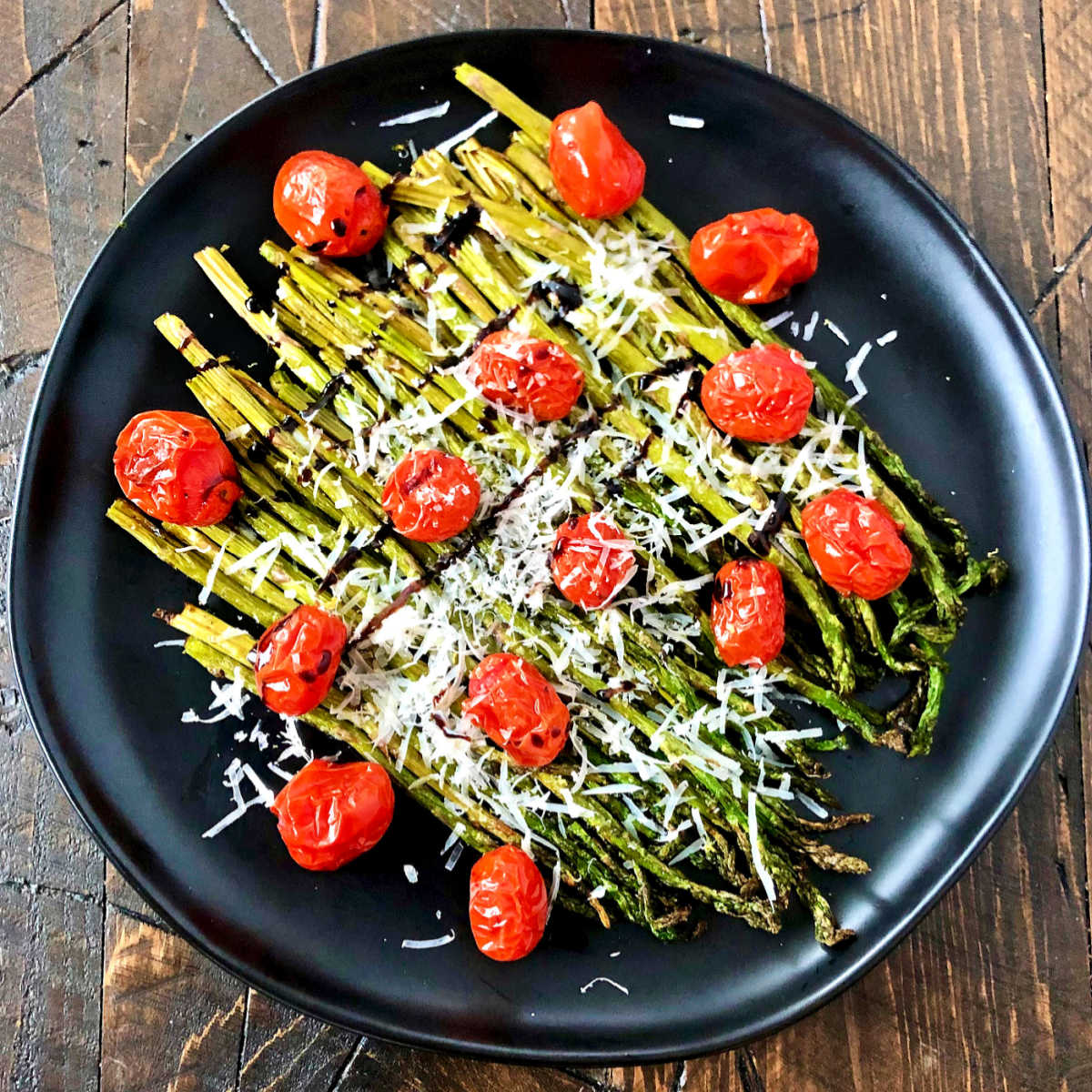
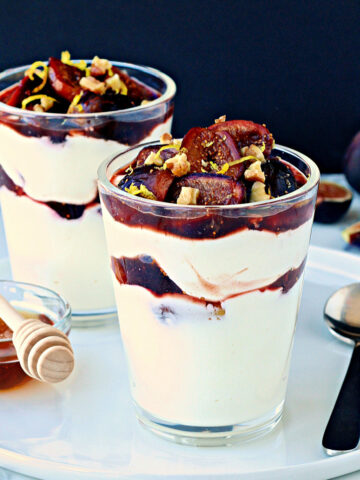
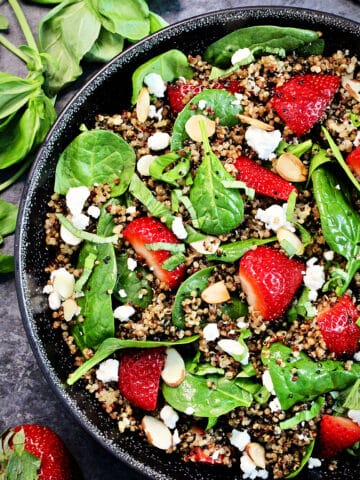
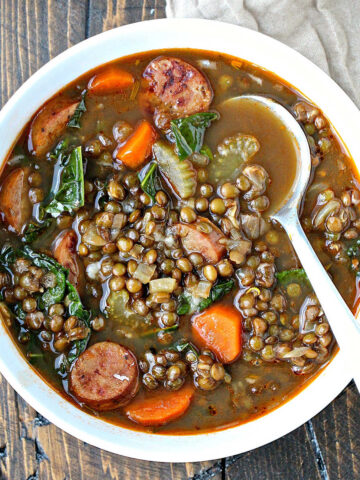
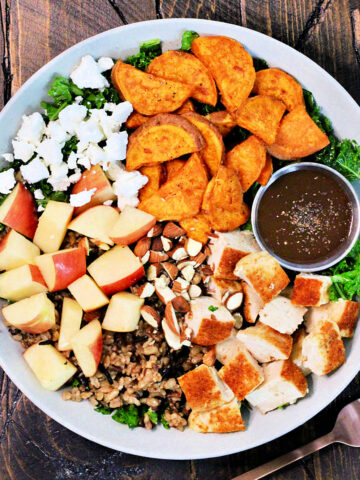

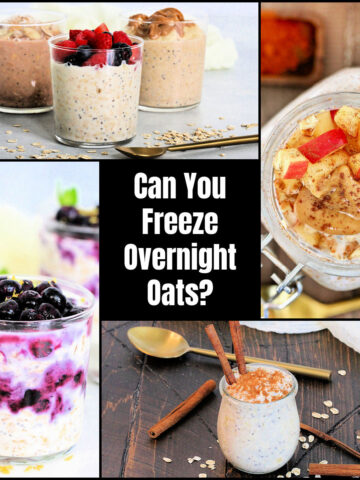
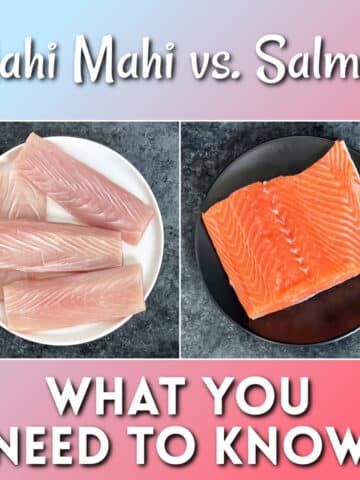
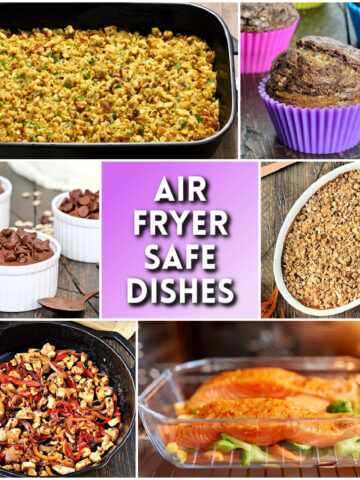
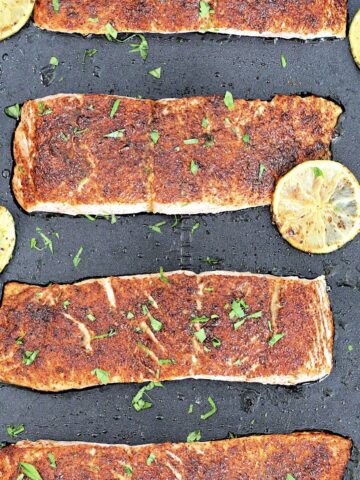
Comments
No Comments